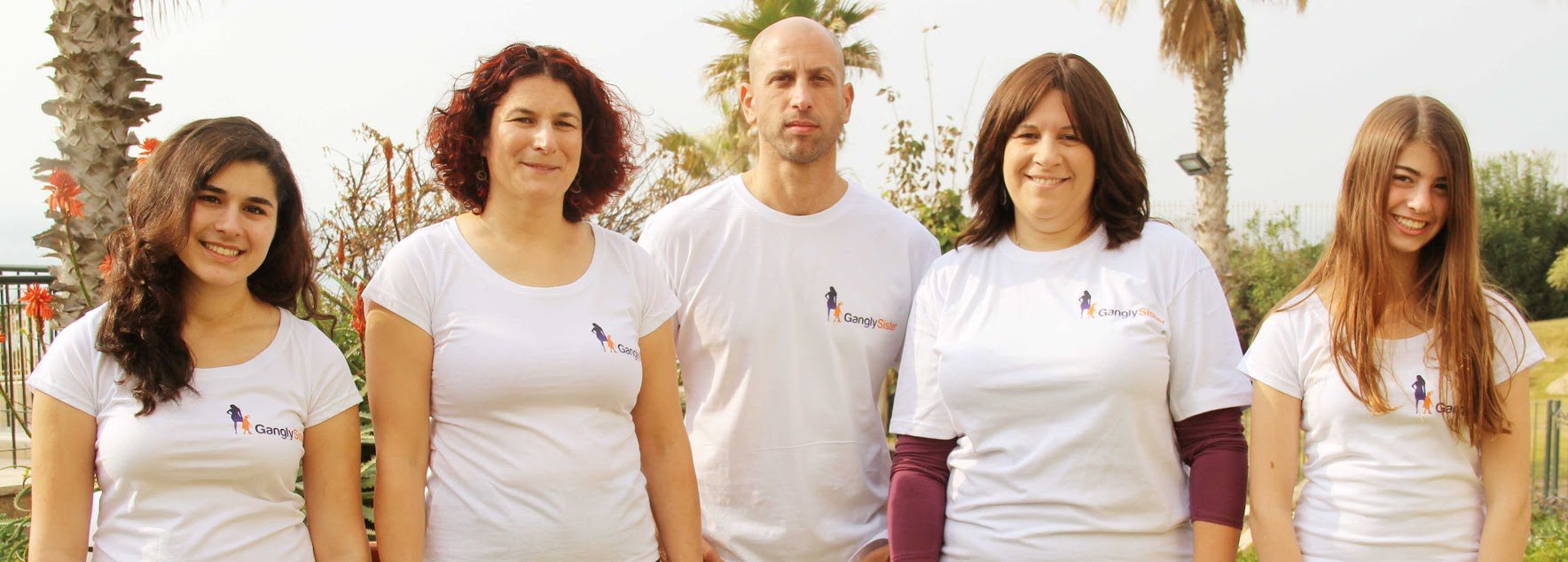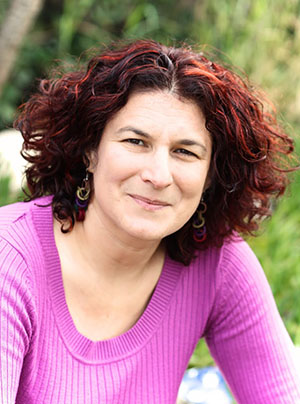Rebecca Rachmany is on a mission to get more girls into tech-based fields. But, beyond that, she hopes to inspire younger generations by revealing their full potential and breaking stereotypes often portrayed by mass media.
After seeing the dismal figures of women in Computer Science programs across the US, Rachmany wanted to take action. But, instead of the many programs targeting those in high school or older, Rachmany is reaching out to a younger demographic.
One of the ways Rachmany is connecting with girls (and boys) aged 8 – 12 is through her Purple and Nine TV show. However, as you’ll see, her vision for Purple and Nine expands beyond just a TV show. Aside from Rachmany’s impressive experience and current TV project, she has tons of amazing advice and inspiration to share. She covers everything from how to make an impact in young people’s lives to the best way to learn a new skill.
Keep reading to see what this wonder woman has to say.
Rachmany’s Impressive Background
Rachmany has quite the resume. It includes everything from CEO of her own businesses (yes, there’s been more than one!) to mentoring with the Microsoft Ventures Accelerator Program to achieving magnificent academic success (such as an MBA) to raising two children.
(Whew… I need some air).
So, where has this wonder woman setup roots? Well, she’s a bit of a nomad. She will be rotating this summer from Tel Aviv to Philadelphia to San Francisco. In the past, she has spent time living in a slough of cities across the US.
And, of course, her latest role is CEO of Gangly Sisters Productions – the force behind the Purple and Nine TV series.
Inspiration Leading to Purple and Nine
Living and working in the business world, Rachmany witnessed time and time again well-connected men starting a business on their own with ease.
“Miriam Lottner, my co-founder, and myself were eating lunch, gossiping about the latest startup with no business model raising money simply because the founders had the right connections. We thought, ‘Where are the women? Why can’t we just raise money for our own startup?’ We realized, hey, we can!”
While thinking about what kind of startup to create, “… We realized we wanted one that would bring more women into technology.”
At that same time, Rachmany observed all the “initiatives to educate girls” that were failing across the world. Moreover, she recognized the falling number of women in Computer Science majors in the US. With these trends in mind, Rachmany came to the conclusion that “you need to start with a child’s self-image at age 8 or 9, not with teenagers — that’s too late.”
The Media’s Influence on Self-image
A huge influence in creating Purple and Nine was realizing the major influence TV shows can have on self image.
“If you look at TV and you see the ‘geeks’ are portrayed as socially inept, your subconscious will push you away from that. Nobody wants to be a social outcast.* Brain science understands the impact of subliminal messages, and yet, we have no filters or control on what’s going into our brains. Just as an example, as a young woman, I didn’t want to be too thin or dress in a feminine way because I thought that would make people think I was unintelligent. It’s just crazy, but I had gotten a strong subliminal message that you could be gorgeous or smart but not both.”
Now seeing how these portrayals influenced her growing up. Rachmany wants to send a message to girls about what it is like to be a geek in real life, not what TV shows like House of Cards convey. (Where the only “hacker” is hunched over a computer and has a strange obsession with his guinea pig.)
She explains,
“You could be a geeky hacker or an athlete hacker or a fashionista hacker. Geeks are allowed to wear contact lenses and run marathons. In fact, you’ll see a fair number of startup CEOs do challenge sports.”
This is one of the core reasons Rachmany chose to target this age group.”Developmentally, this is when kids have the most freedom to dream about what they want to be when they grow up without too much peer pressure,” she says.
Starting The Series
Purple and Nine is an animated series starring two girls, Purple and Nine. However only her co-founder, Ofer Rubin, comes from the world of animation. Off the bat it may seem like Purple and Nine was created to be mainly educational. However, Rachmany explained:
“Purple and Nine is not designed to be ‘educational.’ It’s designed to be a fun cartoon, but one we feel great about showing to our kids. It has a lesson to it, just as any great movie or TV show does, but it’s not exactly ‘education.'”
Differing from typical TV shows on massive networks, Rachmany and her team are all about having fun and being creative. In fact, she sees it as advantageous that most of the team are not from the TV business.
“The world of TV has odd assumptions, for example, that you need a villain to make a plot work, or that girls relate to boy characters but boys don’t relate to girl characters. With Purple and Nine, we break a lot of the traditional rules of television and animation. We know the rules, but because we aren’t from the industry, we have a lot of freedom to break them.”
Purple and Nine as a TV show is really just the beginning because Rachmany’s vision goes beyond just a TV.
“Purple and Nine is a pilot to test the characters,” Rachmany explains. Their long term plan is to “build an online community with apps and a multi-player online game for girls” that is created around these characters and their adventures.
What Rachmany’s Learning Today
When it comes to skills, Rachmany has a portfolio full. But more importantly than what she knows already, she continues to constantly learn. She says, “The most important thing to remember is that everyone needs to learn, all the time. If you aren’t learning, in today’s world, you are falling behind.”
In light of the Purple and Nine series, the most recent skill Rachmany has picked up is video editing.
“I’m not very good at it, but I have basic competency. I think the essential skills you need today are photography, video editing, presentation skills, and coding. Most schools don’t teach those, but most people learn them on their own.”
Advice To Those Trying To Learn Technical Skills
As far as specific coding course recommendations go, Rachmany has heard awesome stories from her local Women Who Code chapter. Including one particular woman who knew nothing when she started, having only dabbled in Code Academy.
“Within 4 months she had a job in a tech company as a QA tester. If you don’t want to learn alone, there are places like Women Who Code or CoderDojo. Find mentors and other people who are on the same path.*”
Aside from the textbook you use or the online class you take, Rachmany emphasizes the importance of your physical surroundings.
“If your friends discourage you, find new friends. It’s absolutely crucial to surround yourself with people who make you feel capable and encourage you to make progress towards your goals.*”
This concept of surrounding yourself with people who you aspire to be (or at least inspire you in some way) is so crucial. Countless studies have proven the impact the people you spend the most time with have on your life. For instance, those with overweight friends are more likely to be overweight. This same idea, of being influenced by those closet to you, can be applied in any scenario.
If you want to learn how to code, surround yourself with people who already know how. If you want to teach kids how to program, get involved with an organization or group of people already doing it.
How To Make A Long-Lasting Impact
Lastly, here are some tips from Rachmany on ways to mentor girls and inspire them to get interested in tech. She also shares specific advice on how to achieve a long-lasting impact.
Looking Inward To Help Others
If you’re striving to make a positive impact on others, Rachmany stresses that first place to start is looking inward. Ask yourself key questions, like “What are the dreams you had as a child that you gave up on?” and “What are you telling people that is impossible in your own life?”
“Ultimately, you either have achieved what you want, or you have a pile of reasons why you didn’t. If you are hanging around with a pile of reasons, throw them aside and start going for your own dreams. I’m not saying you need to be a high achiever to mentor others. Even sharing your regrets can be an inspiration. What I am saying is that the main thing holding people back is their own belief system.”
Inspiration v.s. Motivation
When working with younger girls (and boys), Rachmany also emphasizes the importance of “inspiration rather than motivation.” Motivation is like a “push”, whereas inspiration is like a “pull”.
“Pushing a girl to learn science is different from showing her that scientists are saving ocean wildlife and helping humans to live longer. When she is inspired by the opportunities, you don’t have to push. Girls who watched our mini-episode suddenly got excited about their science classes, because the idea that they could fix a broken toy had immediate application in their lives.”
So, if you’re mentoring a girl or teaching a class, use material and examples they can relate to. Inspire them with opportunities that will become available as a result of learning this new topic/skill.
Another point Rachmany makes about working with younger kids is the actual phrasing used. For instance, calling a “problem” an “opportunity for innovation” instead. She elaborates,
“You can call a particular circumstance a ‘problem’, or you can call it an ‘obstacle’, a ‘creative challenge’, or an ‘opportunity for innovation‘.* It’s the same physical manifestation, but when you think of it as an opportunity for innovation, you behave completely differently than when you think about it as an obstacle. When speaking to girls, we want to let them know that there are many creative challenges and opportunities for innovation.”
It’s all about changing the mindset with wording used. Don’t call it a “math problem.” How about, “It’s a math opportunity for innovation!”
Wrapping Up
There is a ton of awesome information and inspiration above. But here’s a break down of the main points:
- Rebecca Rachmany has a kick-butt list of previous accomplishments
- She’s currently working on the Purple and Nine TV series to inspire kids aged 8-12 to follow more STEM-based paths
- She’s constantly learning new skills and stresses the importance of forever-learning
- She advises to those looking to make an impact in the lives of others, first look inwards
- When working with young kids, it’s vital to inspire rather than motivate
- Show youngsters that “problems” are actually “creative challenges” or “opportunities for innovation”
Did you like this story? If yes, share it with your friends on Twitter!
*Underlined words and sentences added by me for emphasis. All images provided by Rebecca Rachmany.


